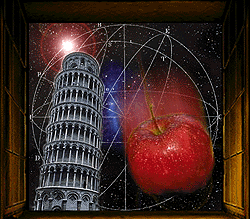An artist's rendering of some of the forces of the universe. The apple falling is of course from the story of Isaac Newton discovering the law of gravity as an apple fell from a tree he was sitting underneath.
Windows to the Universe original image
Gravity Definition Page
Gravity is one of
the universal forces of nature. It is an attractive force between all matter, and is very weak as compared to the other forces of nature. The gravitational force between two objects is dependent on their
masses, which is why we can only see gravity in action when at least one of the objects is very large (like
the Earth).
Isaac Newton was the first scientist to define gravity mathematically when he formulated his law of universal gravitation. The law of gravitation says that gravity is strongest between two very massive objects, and gets much weaker as these objects get further apart.
One of the applications of this law is the concept of ‘escape velocity’, which is the velocity an object needs to achieve to escape the gravitational pull of another object (like the Earth). Escape velocity can be calculated from Newton’s gravitational law, and if we plug in the measurements we have for the planet Earth, we see that Earth’s escape velocity is about 11 km/s. This means that if you could throw a baseball at 11 km/s, it would never come down!
The concept of escape velocity is especially interesting when you consider black holes. These objects are extremely dense and very small. When we calculate the escape velocity for these objects, we find that the number is actually the speed of light, so not even light can get out of a black hole!
You might also be interested in:

The interactions in the Universe are governed by four forces (strong, weak, electromagnetic and gravitational). Physicists are trying to find one theory that would describe all the forces in nature as
...more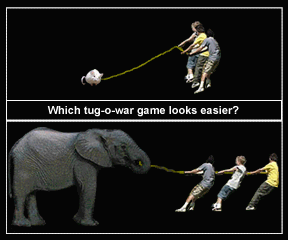
Would it be more difficult to pull an elephant or a mouse? If you pulled each animal with the same amount of force, the elephant would respond less to pulling, even if he didn’t pull back at all. That’s
...more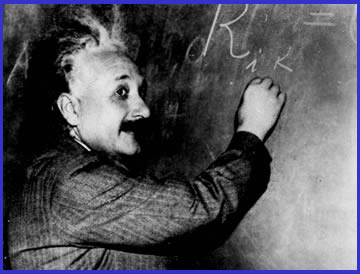
Scientists use the word theory differently than nonscientists. "It’s just a theory," you hear people say. When speaking casually, people often use the word "theory" to mean a "guess" or a "feeling". In
...more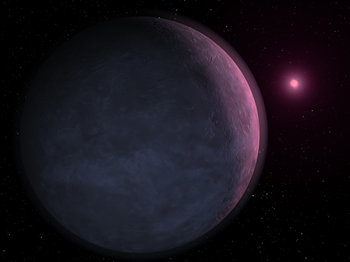
If there are other planets in the Universe that are like Earth, then they might be places where life could survive. However, the search for planets like Earth is not easy. Most of the planets found outside
...more
AU stands for Astronomical Units. It is a useful way to measure the distances in interplanetary space. It is the distance between the Earth and the Sun, which is about 93 million miles. For reference,
...more
The solar wind is formed as the Sun's top layer blows off into space, carrying magnetic fields still attached to the Sun. Gusts form in the solar wind associated with violent events on the Sun. Particles
...more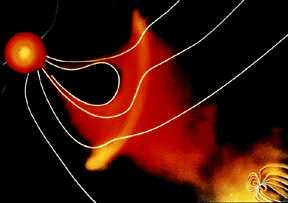
For a planet to be affected by a blob of material being ejected by the sun, the planet must be in the path of the blob, as shown in this picture. The Earth and its magnetosphere are shown in the bottom
...more
